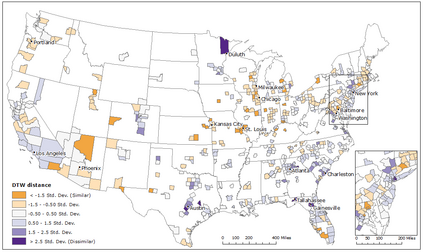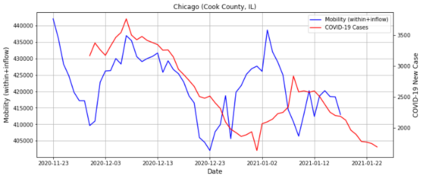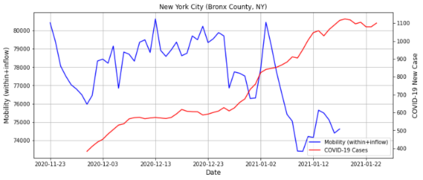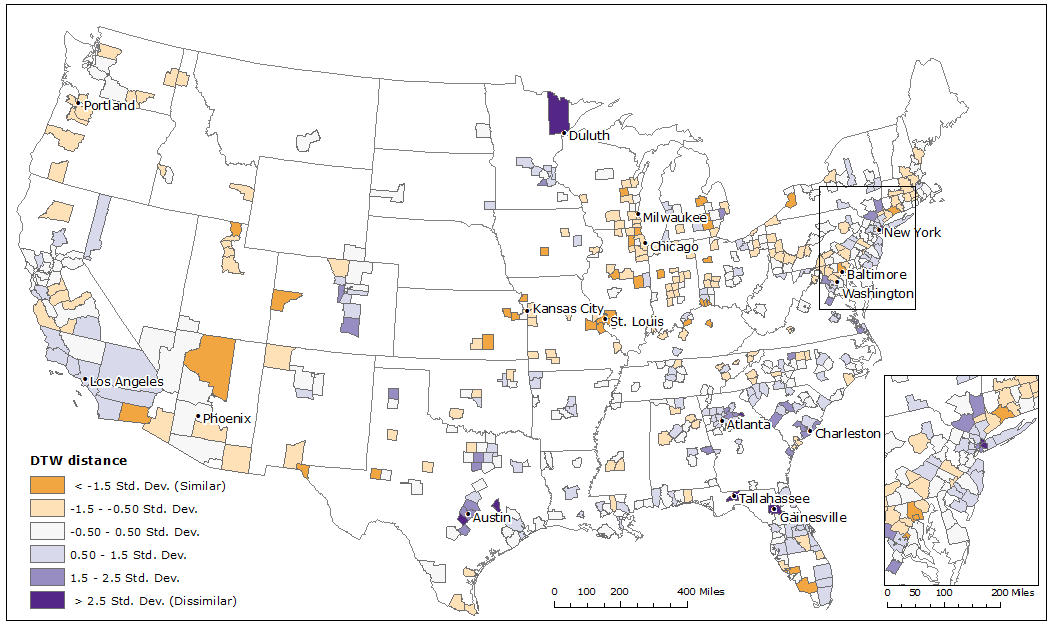Understanding where and when human mobility is associated with disease infection is crucial for implementing location-based health care policy and interventions. Previous studies on COVID-19 have revealed the correlation between human mobility and COVID-19 cases. However, the spatiotemporal heterogeneity of such correlation is not yet fully understood. In this study, we aim to identify the spatiotemporal heterogeneities in the relationship between human mobility flows and COVID-19 cases in U.S. counties. Using anonymous mobile device location data, we compute an aggregate measure of mobility that includes flows within and into each county. We then compare the trends in human mobility and COVID-19 cases of each county using dynamic time warping (DTW). DTW results highlight the time periods and locations (counties) where mobility may have influenced disease transmission. Also, the correlation between human mobility and infections varies substantially across geographic space and time in terms of relationship, strength, and similarity.
翻译:以往关于COVID-19的研究揭示了人的流动和COVID-19案例之间的相互关系,然而,尚未充分理解这种相互关系的短暂时间差异性。在本研究中,我们的目标是查明在美国各州,人的流动流动与COVID-19案例之间的关系的短暂时间差异性。我们使用匿名移动装置定位数据计算了流动总量,包括每个郡内部和进入各州的流动。然后,我们比较了使用动态时间扭曲(DTW)的每个郡的人类流动趋势以及COVID-19案例。DTW的结果突出了流动可能影响到疾病传播的时间和地点(数目)。此外,在关系、强度和相似性方面,人的流动与感染之间的关系在地理空间和时间上差异很大。









